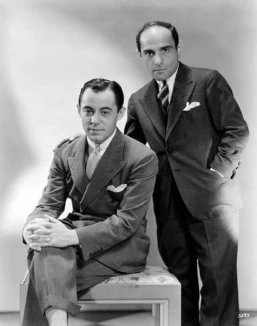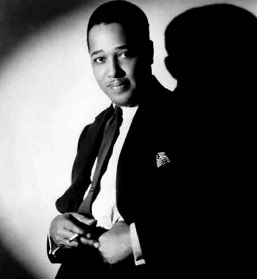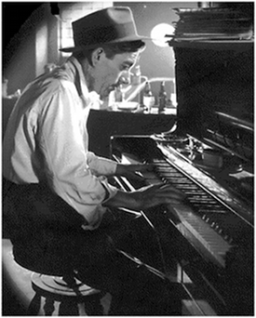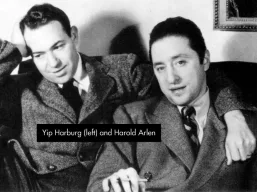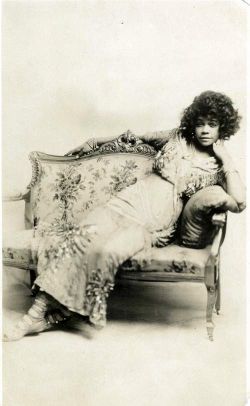I Got Rhythm
______________________
 I Got Rhythm (George Gershwin, Ira Gershwin) was a hit after it’s appearance in Girl Crazy, a 1930 musical which is particularly notable for 1. featuring Ginger Rogers in her first leading role, 2. being the debut musical for Ethel Merman who reportedly stole the limelight from Ms. Rogers, and 3. having produced the most hit songs by the Gershwins in one show. These included:
I Got Rhythm (George Gershwin, Ira Gershwin) was a hit after it’s appearance in Girl Crazy, a 1930 musical which is particularly notable for 1. featuring Ginger Rogers in her first leading role, 2. being the debut musical for Ethel Merman who reportedly stole the limelight from Ms. Rogers, and 3. having produced the most hit songs by the Gershwins in one show. These included:
- But Not for Me
- Embraceable You
- I Got Rhythm
- Sam and Delilah
I Got Rhythm was originally written for Treasure Girl (1928) but was not used. Ethel Merman sang it in the original Broadway production of Girl Crazy.
_______________________
George Gershwin performs I Got Rhythm at the opening of the Manhattan Theatre in New York in August 1931.
The provider says, “This is courtesy of pianist Jack Gibbons who gained this film from Gershwin biographer Edward Jablonski.”
.
From WICN.org’s Song of the Week pages:
“I Got Rhythm” already was becoming a jazz anthem by the time that Louis Armstrong and his band made their brilliant recording in 1931. Ethel Merman had officially stopped the show when she sang the song in the October 14, 1930 debut of the musical Girl Crazy by George and Ira Gershwin. An all-star orchestra was in the pit that night, led by trumpeter Red Nichols with sidemen that included Benny Goodman, Gene Krupa, Jimmy Dorsey and Glenn Miller. Girl Crazy made Merman a star and put “I Got Rhythm” on the way to become what is probably the most widely heard Gershwin song and the one most commonly recorded by instrumentalists. The first recording, shortly after the show opened in 1930, was by Red Nichols and His Five Pennies with vocalist Dick Robertson and rose to fifth place on the pop charts. In 1931 a recording by Ethel Waters peaked at seventeen and Louis Armstrong’s version also rose to seventeen in 1932.
Since the 272 performances on Broadway when it first opened in 1930, Girl Crazy has been recycled`a few times. It served as the basis for three films, the first of which was a lacklustre RKO effort in 1932. The second release, by MGM in 1943 with Judy Garland and Mickey Rooney, was much more successful. MGM probably should have stopped with that release, but went on to a third release in 1965, entitled When the Boys Meet the Girls, which, with the exception of the music, received very poor reviews. In 1992 Girl Crazy appeared on Broadway again as the basis for the hit Crazy for You that ran for 1,622 performances. Several other Gershwin hits were introduced in Girl Crazy, including “Embraceable You” and “But Not for Me,” both sung by Ginger Rodgers, the other female lead in the 1930 show. That show also made her a star, but her performance was somewhat overshadowed by Merman’s climatic rendition of “I Got Rhythm.”
The popularity of “I Got Rhythm” with jazz musicians lies in its harmonic chord progression. The term “rhythm changes”, as understood by jazz musicians, refers to the chord progressions of “I Got Rhythm”. Will Friedwald, in his book Stardust Melodies, provides a detailed history and analysis of the song. He describes it as being a “…simple, playful melody and well-constructed chord sequence…designed to encourage improvisation.” He goes on to say “…1932 was the year of Sidney Bechet’s variation on “I Got Rhythm,” which the great New Orleans reedman titled “Shag,” a piece sometimes described as the first instance of what would soon become exceedingly commonplace in jazz: a musician taking the chord sequence to “Rhythm” and putting a new melody of his own on top of it.” While Bechet may have been the first to recycle the chords in “I Got Rhythm”, since then the “rhythm changes” have been used to create hundreds of published songs. Some notable examples include: “Lester Leaps In,” “Cottontail,” “Salt Peanuts,” “Shaw Nuff,” “Hit that Jive, Jack!” “Straighten Up and Fly Right,” “Anthropology,” and “Giant Steps.” It is well-known that bebop artists like Charlie Parker and Dizzy Gillespie frequently used variations of the “I Got Rhythm” changes for improvisation. However, it may come as a surprise that Thelonious Monk used a “Rhythm” foundation for a number of his original compositions, including “Bemsha Swing” and “Rhythm-a-ning.”
Although instrumentalists primarily focused their improvisations on the harmonic progressions in “I Got Rhythm,” vocalists improvised on the melody and lyrics. Notable recordings by jazz singers include Ella Fitzgerald, Mark Murphy and Sarah Vaughn. However, singers from other genres, like pop and Broadway, have delivered the song convincingly. In 1967 The Happenings, a pop music group, recorded a rock version of “I Got Rhythm” that sold over a million copies and peaked at third place on the Billboard charts.
Will Friedwald sums up the impact of “I Got Rhythm” on the jazz world: “It would be impossible to name a melody or set of chord sequence that has withstood more interpretations and variations, while Ira Gershwin’s lyric has become part of our common cultural consciousness. Performers looking for an inspiring piece of material may “ask for anything more,” but they’re not very likely to get it.”
___________________________
Red Nichols and his Five Pennies featuring vocals by Dick Robertson — 1930(?)
Note: The video provider says its Red Nichols and his Orchestra, while redhotjazz.com and jazzstandardscom each credit Red Nichols and his Five Pennies for this track. (RA audio file from redhotjazz: I Got Rhythm)
.
Ethel Waters — 1931(?)
.

Louis Armstrong — New York, 12 February 1938 (radio broadcast transcription)
The shouts in the final minute sound like they are coming from Fats Waller.
Louis Armstrong, trumpet
Jack Teagarden, trombone
Bud Freeman, tenor sax
Fats Waller, piano
probably Al Casey, guitar
possibily Zutty Singleton, drums
.
.
Judy Garland et al.
The final number in the 1943 film Girl Crazy — Performed by Judy Garland, Mickey Rooney, Six Hits and a Miss, The Music Maids, Tommy Dorsey & His Orchestra and chorus
____________________
Don Byas and Slam Stewart: Recorded: Concert “Town Hall”, NYC on 9 June 1945 Personnel: Don Byas – Tenor Sax “Slam” Stewart – Bass
.
Benny Goodman Sextet — 1945
The provider says:
This 78rpm-record is played on my portable “His Master’s Voice” gramophone from 1938 (Serie 102c, with green leather case).
One of Benny Goodman’s greatest combos was the sextet that he led in 1945. With Red Norvo on vibes, either Teddy Wilson or Mel Powell on piano and the humming bass solos of Slam Stewart, this unit had a lot of personality and yet allowed Goodman to operate throughout as the lead voice.
.
Bing Crosby and “the whole mob”– 1948
Peggy Lee, Joe Venuti, Red Nichols, are among “the whole mob” that Crosby introduces in the opening seconds of this recording, just before signaling Venuti to play the introduction. I had no idea what year it was until I found evidence of a 10 November 1948 radio broadcast of the Philco Radio Time starring Bing Crosby featuring this lineup and song at PeggyLee.com (http://www.peggylee.com/live/radio.html). Jazz trumpeter Ziggy Elman is also credited as participating in the performance.
.
Lena Horne
The provider evidently gives the range of recording dates 31 May 1955 – 4 September 1962, for the tracks appearing on the 1994 album Love is the Thing, from which this is taken.
.











